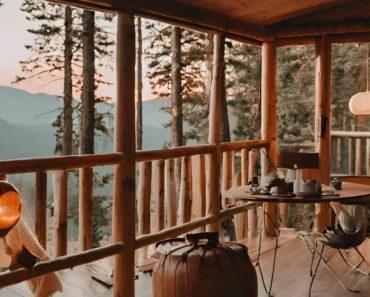Discover the perfect bench dimensions for your home, garden, or commercial space with expert insights and practical tips
Choosing the right bench size can transform your space from awkward to harmonious. Whether you’re selecting dining bench seating, creating a cozy reading nook, or adding outdoor seating to your garden, understanding standard bench dimensions is crucial. This comprehensive guide explores typical bench lengths, depth considerations, height guidelines, and practical factors that influence ideal bench sizing for different applications. You’ll learn how to measure your space accurately, calculate seating capacity, and select benches that combine aesthetic appeal with functional comfort.
Understanding Standard Bench Dimensions
Benches serve as versatile seating solutions across various settings, from dining areas to public parks. While custom sizes exist, most benches follow predictable dimension patterns based on their intended use. The three primary measurements to consider are length (which determines seating capacity), depth (which affects comfort), and height (which impacts ergonomics).
Standard bench heights typically range between 18-20 inches (46-51 cm), which aligns comfortably with standard tables that are 28-32 inches tall . This height range allows most people to sit with their feet flat on the floor and their knees at approximately a 90-degree angle. Bench depth generally falls between 15-20 inches (38-51 cm), with dining benches typically around 17.5 inches deep . Depth beyond 20 inches may become uncomfortable for average-height users when trying to reach a table.
Bench length shows the most variation based on intended seating capacity. The question “how long are benches usually” has multiple answers depending on context. For residential dining applications, benches typically range from 42-60 inches (107-152 cm), with 42-50 inch benches comfortably seating two adults . Commercial and public benches often extend beyond these dimensions to accommodate more people.
Bench Length Variations by Application
Bench length requirements differ significantly based on where and how the bench will be used. Understanding these application-specific variations helps you select the perfect size for your needs.
Dining Benches
Dining benches have become increasingly popular as homeowners discover their space-efficient appeal and communal seating atmosphere. Standard dining bench lengths include:
- 48-inch benches: Ideal for intimate breakfast nooks or small dining setups
- 60-inch benches: Perfectly complement standard 6-person dining tables
- 72-inch benches: Offer generous seating for larger gatherings and extended tables
When selecting a dining bench length, choose one slightly shorter than your table length to create a balanced overhang on each end . This proportional approach ensures visual harmony while maintaining practical functionality.
Outdoor and Garden Benches
Outdoor benches often feature longer dimensions to accommodate more people in public or spacious settings. Park benches commonly range from 60-96 inches in length, with some commercial designs extending even further. These benches frequently feature heavier construction materials like stone, metal, or treated wood to withstand weather elements .
Storage Benches
Storage benches prioritize both seating and functional storage space, which can impact their dimensions. These benches typically range from 36-60 inches in length, balancing seating capacity with practical storage accessibility. The interior storage compartment often dictates minimum depth requirements, generally starting at 18 inches.
Calculating Bench Seating Capacity
Determining how many people can comfortably fit on a bench involves more than simply dividing the length by a fixed measurement. Several factors influence seating capacity, including bench style, intended use, and user comfort preferences.
As a general guideline, allow 18-24 inches of width per person for comfortable seating . Using this calculation, standard bench lengths accommodate:
| Bench Length | Comfortable Capacity | Maximum Capacity |
|---|---|---|
| 48 inches | 2 adults | 3 adults |
| 60 inches | 3 adults | 4 adults |
| 72 inches | 4 adults | 5 adults |
| 84+ inches | 5+ adults | 6+ adults |
Remember that these numbers can flex based on individual body sizes and the context of use. A bench for occasional holiday gatherings might accommodate more people than one used for daily dining. Backless benches often allow for slightly more seating capacity than those with backrests, as people can sit slightly closer together without armrest interference.
Measuring Your Space for the Perfect Fit
Proper measurement ensures your new bench fits harmoniously within your space without creating awkward squeezes or imbalances. Follow these steps for accurate measuring:
Essential Measurements to Take
Before bench shopping, gather these crucial measurements:
- Table dimensions: Length, width, and height, including any extensions
- Room dimensions: Overall room size plus doorways and walkways
- Distance from walls: Space between walls and table edges
- Obstructions: Windows, radiators, vents, or other fixed elements
Clearance Guidelines
Adequate clearance around your bench ensures comfortable movement and access. Follow these minimum recommendations:
- 18-24 inches: Main seating zone between bench and table
- 18-36 inches: Main pathways around the dining area
- 2-5 inches: Ideal table overhang beyond the bench
- Additional space: If the bench needs to slide in and out regularly
These measurements provide guidelines for creating comfortable flow in your space . Adjust based on your room layout and personal preferences.
Considering Room Flow and Function
Beyond pure measurements, consider how people move through and use the space. Note high-traffic areas, door swings, and visual sightlines. In open floor plans, position benches to help define the dining area while maintaining connection to adjacent spaces. Think about daily routines—will the bench block morning sunlight? Does it need to accommodate someone’s favorite reading spot? These practical considerations often outweigh strict dimension guidelines.
Special Considerations for Different Bench Types
Beyond standard dimensions, specific bench styles present unique sizing considerations that impact both function and aesthetics.
Backless vs. Backed Benches
Backless benches (or utility benches) typically feature slightly narrower depths—often 15-18 inches—since they don’t need to accommodate backward leaning. These work well for tight spaces or under-table storage. Benches with backrests usually measure 18-20 inches deep to provide proper back support and comfortable seating posture.
Upholstered vs. Wooden Benches
Upholstered benches often appear bulkier than their actual dimensions due to padding and fabric. When measuring for an upholstered bench, consider both the frame dimensions and the visual weight added by cushioning. Wooden benches maintain their stated dimensions but might feel harder without additional cushions.
Curved and Corner Benches
Curved benches require different measurement approaches than straight designs. For curved benches, measure the linear length along the curve rather than the straight-line distance between endpoints. Corner benches (L-shaped designs) need both arm measurements recorded separately, plus the overall footprint dimensions.
Custom Bench Options: When Standard Sizes Don’t Fit
Sometimes standard bench dimensions won’t work for your unique space or needs. Custom benches offer solutions for challenging spaces or specific requirements.
Consider custom sizing when:
- Your space has unusual dimensions or architectural features
- You need precise seating capacity for regular entertaining
- You want to match existing furniture precisely
- You have specific storage requirements underneath the seat
When commissioning custom benches, work with an experienced furniture maker who can advise on structural integrity, proportional aesthetics, and practical functionality. Custom benches typically cost 20-50% more than standard options but provide perfect solutions for challenging spaces.
Many furniture companies offer semi-custom options where you can modify standard designs to specific lengths while maintaining proportional depth and height. This approach often provides the perfect balance between customization and affordability.
Key Takeaways:
- ✓
Standard bench lengths range from 42-60 inches for residential use, with 42-50 inches comfortably seating two adults - ✓
Allow 18-24 inches of width per person for comfortable seating, adjusting based on bench style and context - ✓
Bench depth typically ranges from 15-20 inches, with dining benches around 17.5 inches deep - ✓
Standard bench height is 18-20 inches, designed to work with tables that are 28-32 inches tall - ✓
Always measure your space thoroughly, considering clearances, traffic patterns, and functional needs
Frequently Asked Questions
What is the most common bench length for dining tables?
The most common dining bench lengths are 60-inch models that complement standard 6-person dining tables. These benches typically accommodate 3-4 adults comfortably, depending on body sizes and desired comfort level. For smaller spaces or intimate settings, 48-inch benches work well for 2-3 people.
How do I calculate how many people can fit on a bench?
Calculate bench capacity by allowing 18-24 inches of width per person. Divide the total bench length by these numbers to determine comfortable and maximum capacity. For example, a 60-inch bench divided by 18 equals 3.3, meaning it comfortably seats 3 adults with potential for 4 in a pinch. Remember that backless benches often accommodate more people than those with backrests or armrests.
Can I customize bench length to fit my space?
Yes, many furniture manufacturers and custom woodworkers offer bench customization services. Custom lengths are particularly useful for unusual spaces or specific seating requirements. When ordering custom benches, maintain proportional depth and height dimensions—typically 17-18 inches deep and 18-20 inches high for dining applications. Custom benches typically cost 20-50% more than standard sizes but provide perfect solutions for challenging spaces.
How much deeper should a bench be if it has a backrest?
Benches with backrests typically measure 2-3 inches deeper than backless designs to accommodate comfortable leaning positions. While backless benches often range from 15-18 inches deep, benches with back support usually measure 18-20 inches deep. This additional depth ensures proper support without making the bench too deep for comfortable dining posture.
What bench height works with standard tables?
Standard bench height of 18-20 inches pairs perfectly with typical dining tables that are 28-32 inches tall . This combination provides approximately 8-12 inches of clearance between the seat and table bottom, allowing comfortable legroom for most adults. If your table is non-standard height, adjust bench height accordingly while maintaining the 8-12 inch clearance guideline.
Final Thoughts
Understanding standard bench dimensions transforms furniture shopping from guesswork to informed decision-making. While typical bench lengths range from 42-60 inches for residential use, the perfect size ultimately depends on your specific space, seating needs, and aesthetic preferences. Remember that proportional relationships between bench length, depth, and height matter just as much as individual measurements. Always measure your space thoroughly, considering both physical dimensions and how people move through the area. Whether you select a standard size or commission a custom piece, the right bench length enhances both functionality and visual harmony in your space. For more detailed information on furniture dimensions, visit Dimensions.com’s bench collection or explore James & James Furniture’s sizing guide for additional insights.


